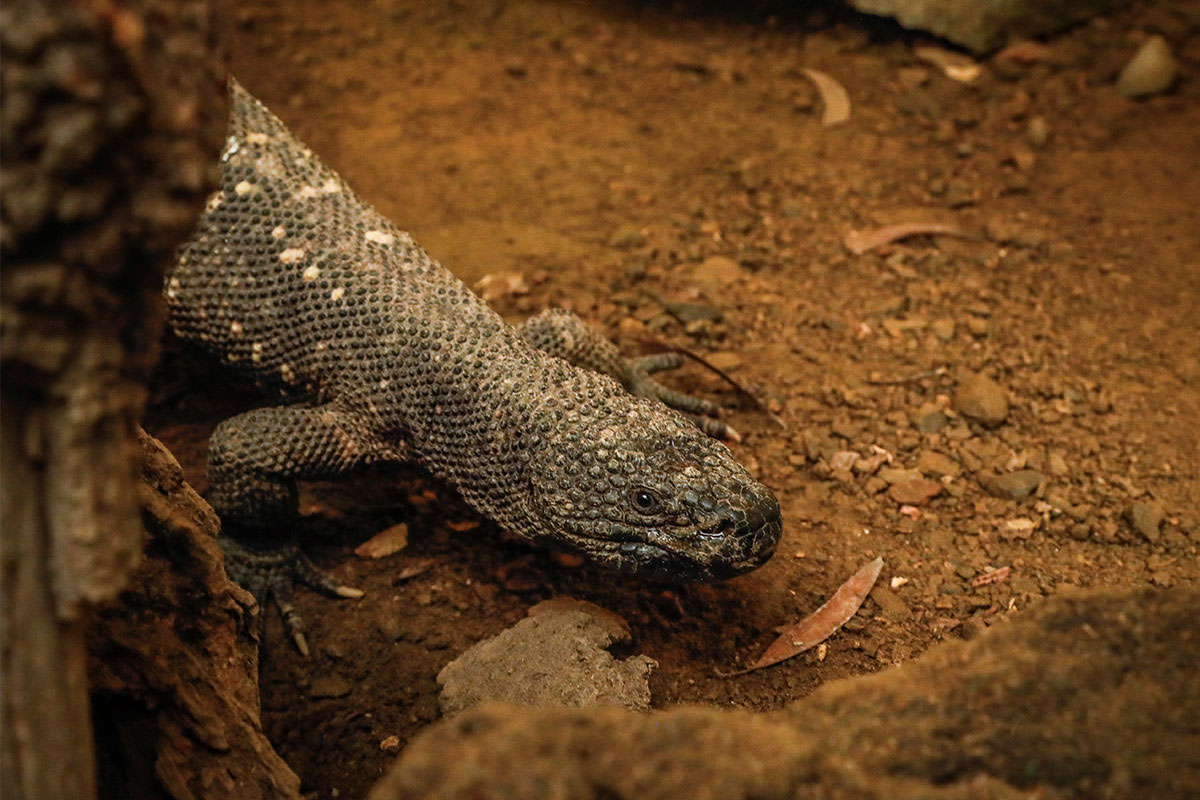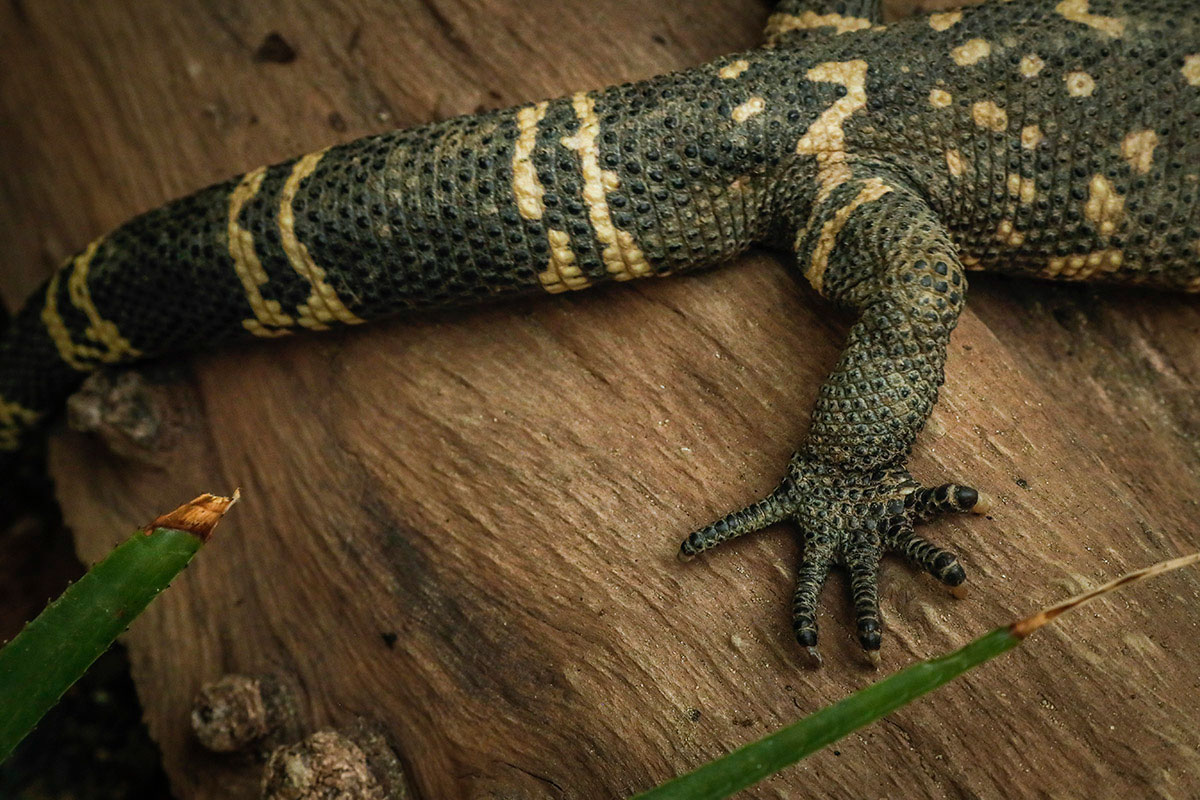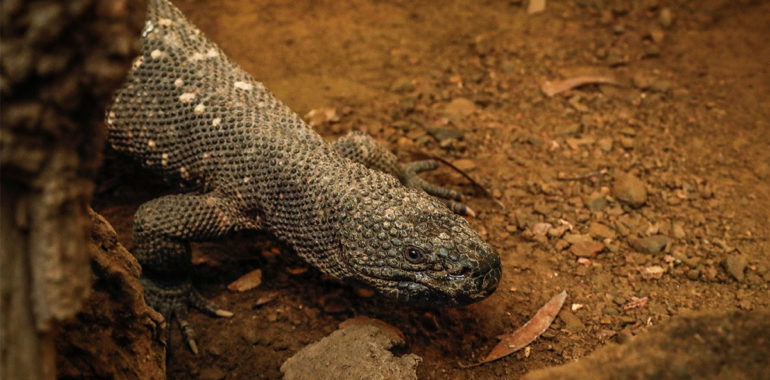Guatemala and its multiple ecosystems hide a wide variety of flora and fauna. In one of the most particular landscapes, the dry tropical forest, the country’s “desert”, hidden in caves lives one of the biggest reptiles of Central America. Surrounded by trees, cactus, and folktales the Heloderma claims for protection and recognition because of its rare nature.
Heloderma is the only genus in the Helodermatidae reptile family consisting of 2 species and 6 subspecies, one of which is found in Guatemala. The Heloderma charlesbogerti, a subspecies of Heloderma horridum commonly called beaded lizard, scorpion or “niño dormido” is an endemic species of venomous lizard distributed to the seasonally dry tropical forest in the Motagua Valley, Zacapa.

When you listen about a venomous lizard, the first thing you thought is obviously not to be bitten, but a powerful bite is the last defense mechanism this reptile will use because they are discrete and not very aggressive animals. However, behind that strong bite, the interest in knowing the properties of its venom has gradually increased. But why will someone be interested? Scientists have recently discovered its medical potential by extracting its substances, which include the treatment of diabetes, Human Immunodeficiency Virus (HIV) and cancer, as well as improved memory and other applications that are still being studied. Is not that amazing?
Another notable peculiarity of scorpions is the type of skin they possess because they have modified beds, known as osteoderms. These structures possess bone under a hardened layer of skin and function as protective armor and resemble shape, size, texture, and color to chaquira beads. That´s why some people called them beaded lizards.

Something that also characterizes them is that they can only be observed in the rainy season because they sleep for the next 6 months. They possess a singular way to deal with the high temperatures and lack of water in the dry season. Heloderma uses abandoned burrows and stay hidden for 6 months! This process is similar to what bears do in winter, hibernation; but it is called estivation when it is the dry season. They survive by lowing their vital signs and getting energy from the fat accumulated in their tail, so they literally transform the fat into energy and water.
In fact, one of many folktales mentions that thunderbolts from rainstorms fall to the ground because of the presence of a scorpion. Naturally, people would drive crazy if they see a Heloderma on rainy weather. They would try to avoid or even kill a scorpion if its near and also because of its venom and appearance that tends to frighten the locals
It is a unique species in the world but unfortunately is in danger of extinction, among the causes are: habitat destruction by deforestation and fires, illegal wildlife trafficking, legends and superstitions that have driven its hunt. But, not everything is so bad, some villagers with the support of nongovernmental and governmental organizations, promote a conservation program in the dry forest of The Motagua´s Valley Natural Reserve since 2003 when the population was less than 250 individuals and now there are more than 500.
Hopefully, we will have the pleasure to study and appreciate this beautiful creature for its peculiar characteristics and medical contributions for many more years. Meanwhile, you can appreciate and share our photos from this venom reptile! Click here
Bibliography for further research:
- 2018
- Conociendo al lagarto escorpión: leyendas realidad y potencial de una rareza biológica. CIENCIA ergo-sum, vol. 25, núm. 2. Universidad Autónoma del Estado de México, México.
Free download:
www.researchgate.net/publication/325551286_Conociendo_al_lagarto_
escorpion_leyendas_realidad_y_potencial_de_una_rareza_biologica
- 2018
- Guatemalan Beaded Lizard (Heloderma horridum charlesbogerti) on the Pacific Versant of Guatemala. Southwestern Association of Naturalists. Vol, 55. No.3, pages 453-454.
- 2015
- Spatial ecology of the endangered Guatemalan Beaded Lizard Heloderma charlesbogerti (Sauria: Helodermatidae), in a tropical dry forest of the Motagua Valley, Guatemala. Mesoamerican Herpetology, Vol. 2, No. 1
Available on:
https://mesoamericanherpetology.com/uploads/3/4/7/9/34798824/
mh_2-1_ariano-sanchez_and_salazar.pdf
First posted, Feb 2020
Note by Vivian Hurtado, FLAAR Mesoamerica (Guatemala).

